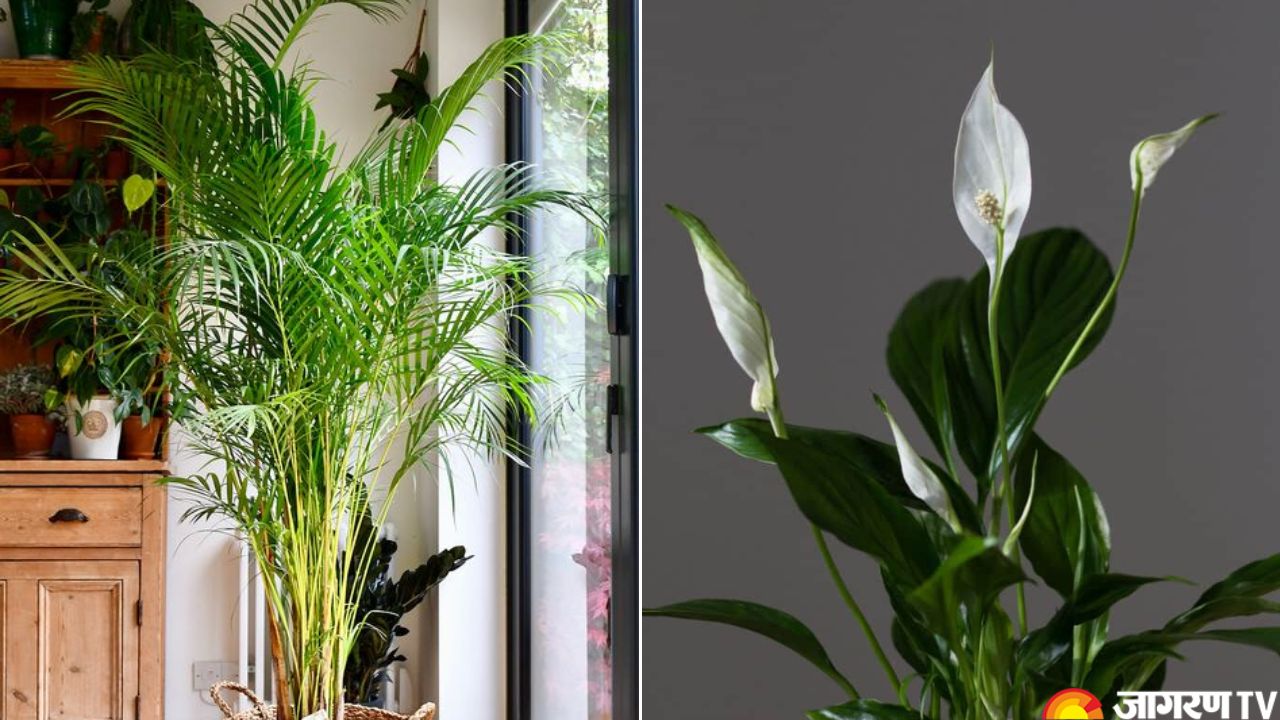Pollution Control Tips: Indoor Plants Which Help Purify Air and Reduce Health Issues

Pollution Control Tips: Pollution has become a major concern in recent years, with serious consequences for human health. Air quality has deteriorated due to growing urbanization, industrial activity, and automobile emissions, increasing health issues. Prolonged exposure to dirty air can lead to respiratory ailments, cardiovascular disorders, and even mental health issues. Thankfully, nature provides an environmentally beneficial approach to combat indoor pollution. Certain plants operate as natural air filters, collecting pollutants and releasing oxygen to create a better interior atmosphere. Check out some indoor plants you can keep in your house to help purify the air and combat pollution.
Spider Plant (Chlorophytum comosum)
Spider plants are known for their durability and ease of maintenance, making them perfect for first-time plant owners. They are particularly effective at removing formaldehyde, a prevalent pollutant found in cleaning supplies and furniture. This plant can also absorb xylene, a solvent commonly used in paint and rubber. Spider plants prefer indirect sunlight and can survive in a variety of environments, cleaning the air without requiring a lot of maintenance.
Lavender (Lavandula)
Lavender is admired for its relaxing aroma, which has been shown to relieve stress and promote better sleep. Apart from its calming benefits, lavender contains antimicrobial capabilities and can enhance indoor air quality by neutralizing mold spores. Lavender plants demand a lot of sunlight and are best suited to spaces near windows. In addition to boosting air quality, lavender's relaxing smell helps boost mental health.
Aloe Vera (Aloe barbadensis miller)
Aloe vera is known not just for its medicinal capabilities, but also for its ability to filter out toxins like formaldehyde and benzene, which are byproducts of paints, household cleaners, and other synthetic substances. Aloe vera is well-known for its gel, which heals skin wounds and cleans the air. This plant grows in sunny locations and requires minimal water, making it both functional and decorative.
Bamboo Palm (Chamaedorea seifrizii)
The bamboo palm is an excellent indoor plant for improving air quality since it can remove benzene, formaldehyde, and trichloroethylene from the air. It works particularly well in high-pollution areas and can give homes a tropical look. Bamboo palms enjoy bright, indirect light and consistent watering, and they can grow fairly large, making them ideal for wide settings.
Peace Lily (Spathiphyllum)
Peace lilies are popular indoor plants that effectively reduce levels of pollutants such as ammonia, benzene, and formaldehyde. They also enhance humidity, which makes them useful in dry indoor conditions. Peace lilies thrive in low light and require little water, making them simple to care for. Their white blossoms not only purify the air but also lend elegance to indoor spaces.
Rubber Plant (Ficus elastica)
Rubber plants are extremely effective in removing pollutants from the air, particularly formaldehyde, which is typically present in furniture and cleaning chemicals. They also emit large amounts of oxygen, which improves overall air quality. Rubber plants require indirect sunlight and moderate irrigation to grow. Their shiny, wide leaves lend a modern touch to any room and make them a fashionable addition to interior spaces.









